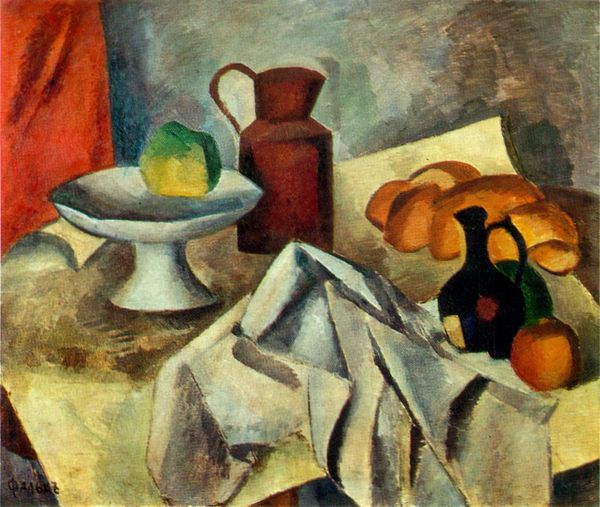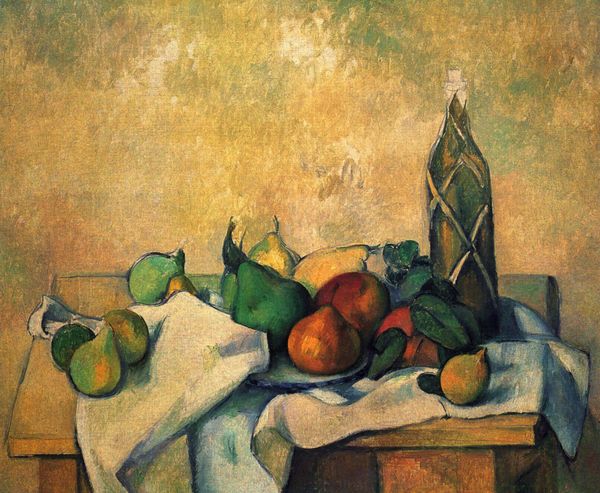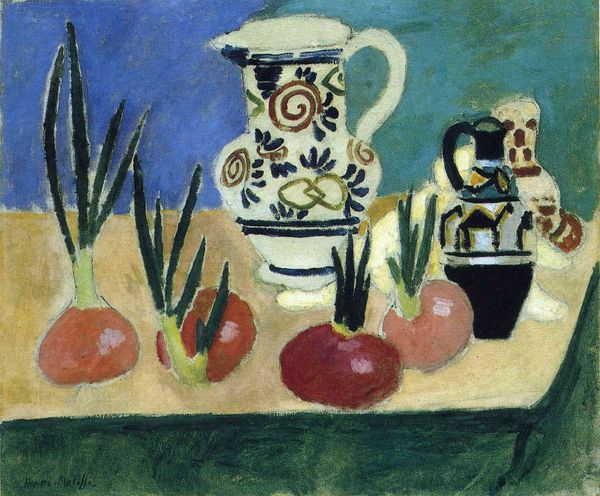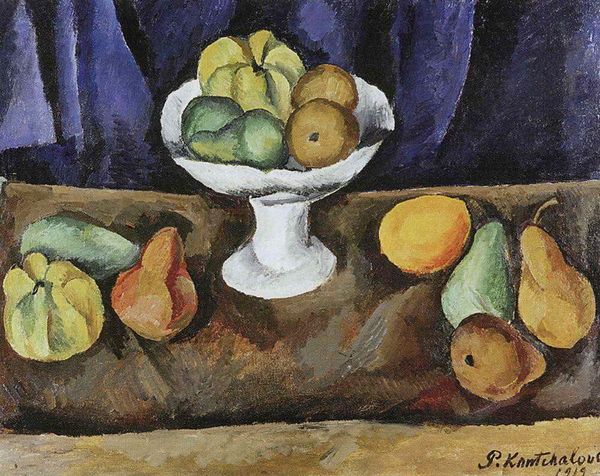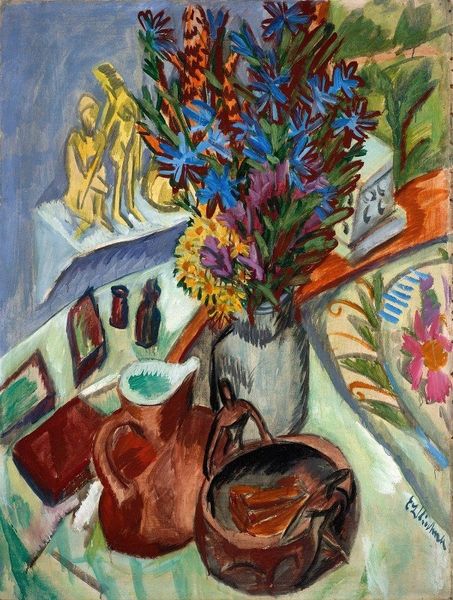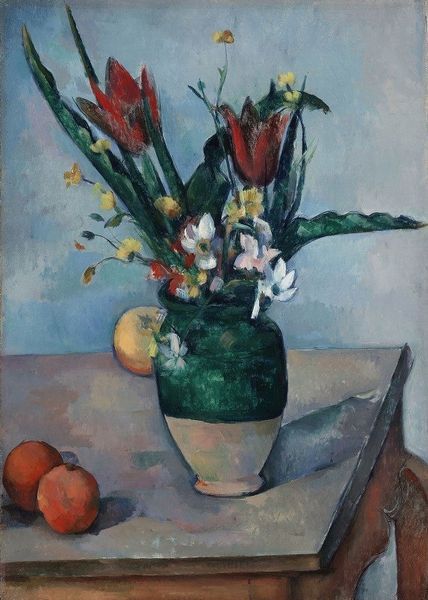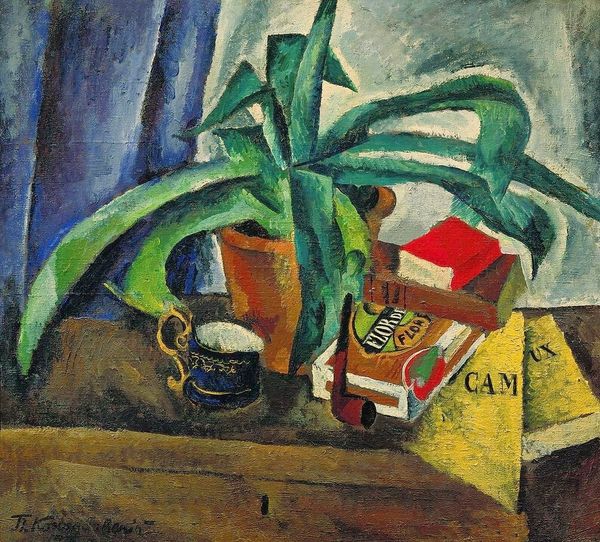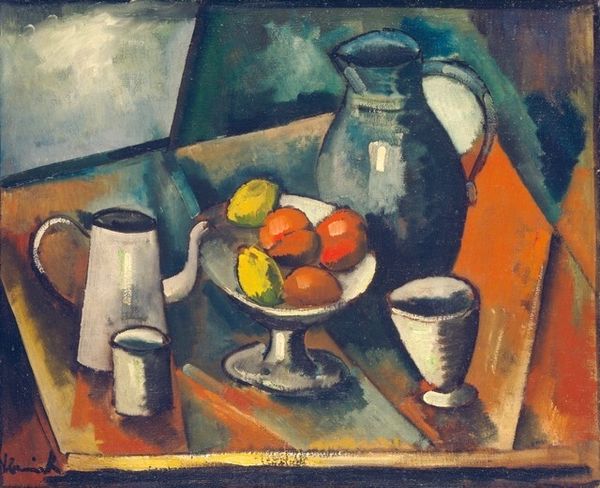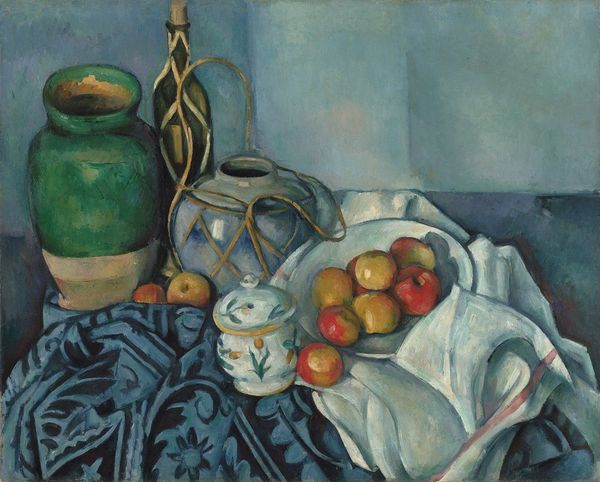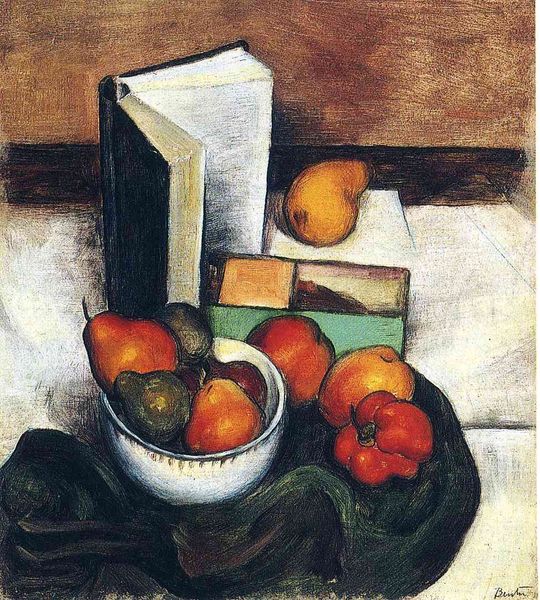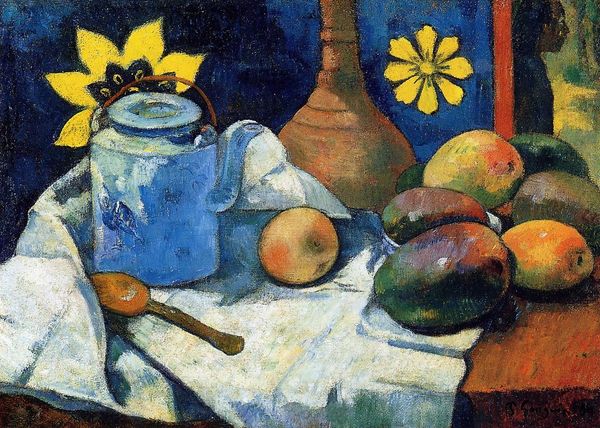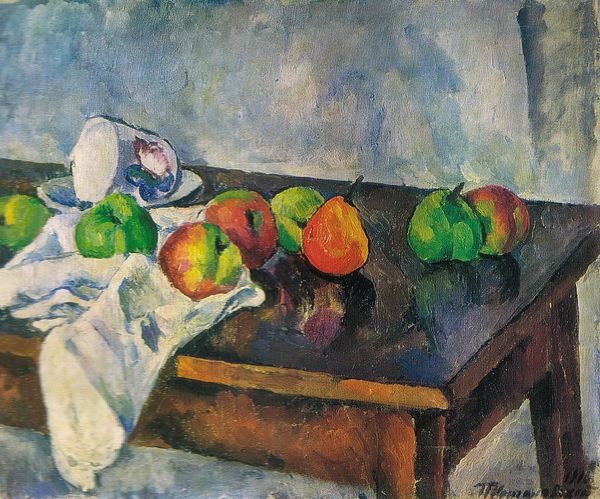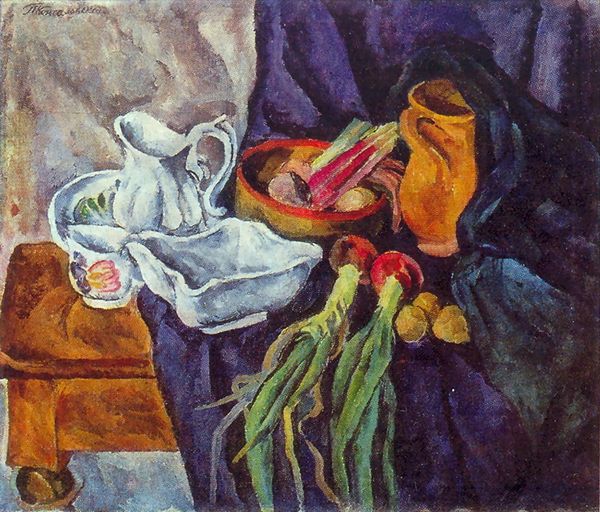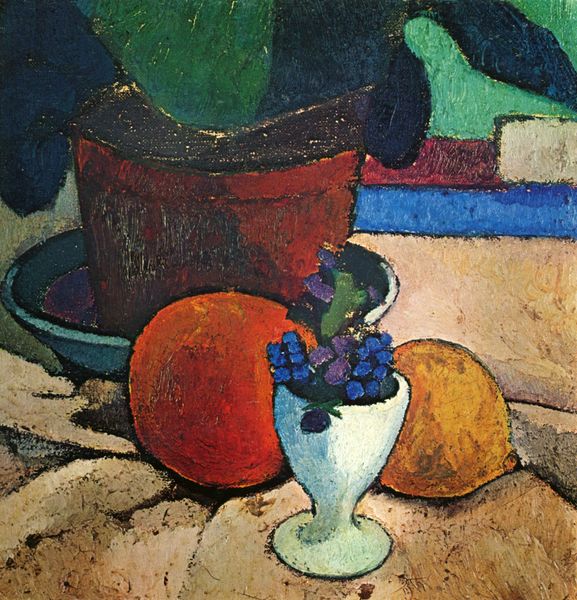
oil-paint
#
dutch-golden-age
#
canvas painting
#
oil-paint
#
oil painting
#
fruit
#
geometric
#
plant
#
expressionism
#
naive art
#
modernism
#
expressionist
Dimensions: 69 x 89.8 cm
Copyright: Public domain US
Curator: This is Pyotr Konchalovsky's "Still Life. Vegetables," painted in 1916. It’s an oil painting, and I find its color palette and composition fascinating. What's your initial reaction? Editor: The first thing that strikes me is the light—or lack thereof. It’s as if these humble vegetables are holding some sort of clandestine meeting under a very moody sky. There is a certain theatrical intensity that brings the ordinary to life. Curator: Indeed. While Konchalovsky often experimented with avant-garde styles, including Cubism, there's a grounding in the legacy of still life tradition. Editor: Precisely. Still lifes traditionally acted as a coded way to consider fleeting life through the vanitas style or find deeper meaning through color and shape. Look at that vivid purple onion. It is hard not to consider it beyond the purely aesthetic. Curator: Absolutely! Konchalovsky, in his own way, presents us with symbols. The leek, upright and verdant, is almost defiant. Its positioning hints at vitality and resilience, whereas the mortar symbolizes preservation, a holding on to the past, perhaps? Editor: I see it more like the transformation of life—crushing herbs, making medicine, concocting potions. I love how the mundane domestic becomes the very heart of life itself, made holy. Curator: And you’re seeing continuity here as well, a continuation of a certain spirit, perhaps, or a memory? Editor: In ways both literal and artistic, the canvas breathes with echoes of the Dutch masters, whose symbols and compositions haunt even such a distinctly modern approach. And the tension with the expressive brushwork creates this intriguing space. Curator: I find myself reflecting on the interplay between transience and permanence in his visual arrangement, a poignant commentary considering the historical backdrop of 1916 and how those domestic comforts are increasingly more vital. Editor: Looking at it now, I’m appreciating how even something as straightforward as a still life can become a window into a whole world of feeling, symbolism, and just plain beauty, offering more and more each time you return.
Comments
No comments
Be the first to comment and join the conversation on the ultimate creative platform.
